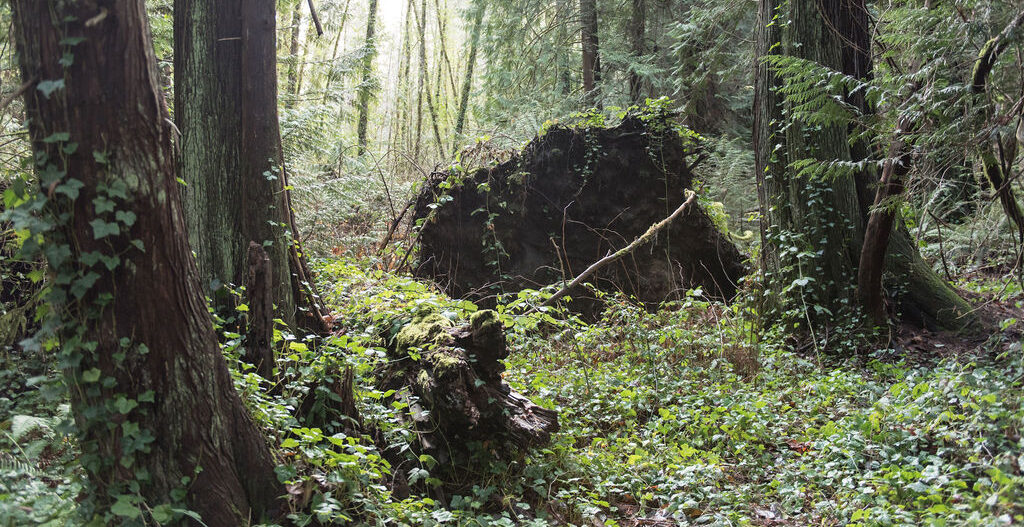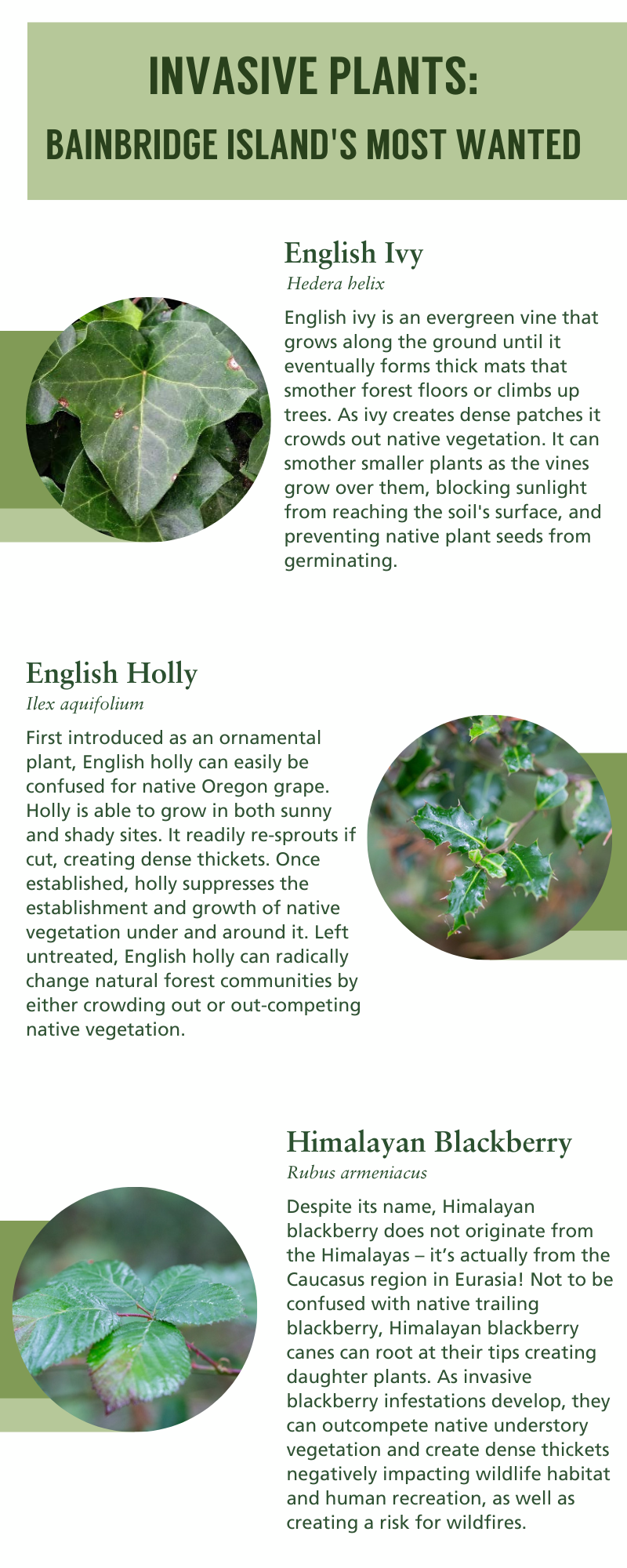What are Invasive Plants?
Invasive plants are non-native species that have been introduced to Bainbridge Island and have the potential to cause harm to local ecosystems, the economy, and human activities. These plants possess aggressive spreading capabilities, out-competing native vegetation and disrupting the natural balance and biodiversity of the island.
Examples of invasive plant species found on Bainbridge Island include Scotch broom, Himalayan blackberry, English ivy, English holly, and others. These species often exhibit characteristics that enable them to thrive in the island’s environment, such as rapid growth, high reproductive rates, efficient seed dispersal mechanisms, and adaptability to various soil and light conditions.
Impacts of Invasive Plants on Bainbridge Island
Invasive species pose a significant threat to the lands and waters of Bainbridge Island. They can outcompete native plants, reducing food sources and habitat availability for local wildlife, including birds, insects, and other animals. This disruption to natural ecosystems can result in the decline or potential extinction of native species.
Beyond ecological impacts, invasive plants also affect human activities and island infrastructure. Some invasive species can hinder access to recreational areas, degrade the aesthetic value of natural landscapes, or cause waterway blockages, leading to drainage issues. In agricultural areas, invasive plants can interfere with crop production and reduce overall yields.
Managing Invasive Species: Bainbridge Island Land Trust’s Approach
At the Bainbridge Island Land Trust, we have a plan to handle invasive species. Our approach has three important steps: prevention, early detection and rapid response, and control.
Prevention is the first line of defense against invasive species. It involves taking proactive measures to stop their introduction and spread, including promoting responsible gardening practices, and promoting guidelines to prevent unintentional introduction. For more details on identifying and removing invasive plant species read our Invasive Species Guide.
Early detection and rapid response is critical for effective management. By monitoring vulnerable areas, we can quickly identify new infestations and take immediate action to contain and eradicate newly discovered invasive species populations. This prevents their establishment and minimizes the potential harm they can cause.
Control measures are necessary to manage established invasive species populations. Our approach prioritizes non-chemical control methods to minimize harm to the environment. We employ manual techniques, such as hand-pulling or cutting, to physically remove invasive plants. Mechanical methods, such as using machines or tools, are also utilized for larger infestations. Additionally, cultural practices, such as promoting native plant communities, can help suppress invasive species growth. When necessary, we may use targeted chemical treatments, following strict guidelines, to effectively manage invasive species.
Learn more about our approach to managing invasive species here.


